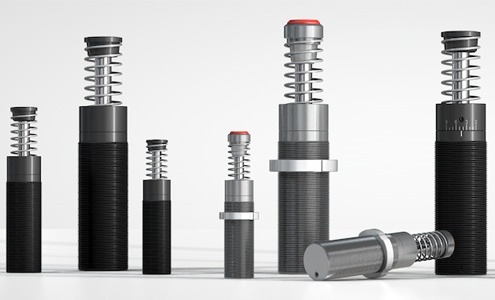IMARC Group’s “Hydraulic Shock Absorbers Manufacturing Plant Project Report 2024: Industry Trends, Plant Setup, Machinery, Raw Materials, Investment Opportunities, Cost and Revenue” report provides a comprehensive guide on how to successfully set up a hydraulic shock absorbers manufacturing plant. The report offers clarifications on various aspects, such as unit operations, raw material requirements, utility supply, infrastructural needs, machinery models, labour necessities, transportation timelines, packaging costs, etc.
In addition to the operational aspects, the report also provides in-depth insights into hydraulic shock absorbers manufacturing process, project economics, encompassing vital aspects such as capital investments, project funding, operating expenses, income and expenditure projections, fixed and variable costs, direct and indirect expenses, expected ROI, net present value (NPV), profit and loss account, and thorough financial analysis, among other crucial metrics. With this comprehensive roadmap, entrepreneurs and stakeholders can make informed decisions and venture into a successful hydraulic shock absorbers manufacturing unit.
Request for a Sample Report: https://www.imarcgroup.com/hydraulic-shock-absorbers-manufacturing-plant-project-report/requestsample
What are Hydraulic Shock Absorbers?
Hydraulic shock absorbers, also known as dampers, play a vital role in managing the energy produced by shocks and vibrations in various machinery, vehicles, and industrial applications. These devices use a hydraulic fluid to absorb and dissipate energy, converting kinetic energy into heat, which is then managed within the damper itself. This mechanism improves vehicle comfort and stability, prevents equipment wear, and enhances operational safety. They are primarily used in the automotive industry, but hydraulic shock absorbers are also essential in aerospace, industrial equipment, and rail systems, providing reliable performance in controlling motion and minimizing vibrations across a range of environmental conditions.
Market Trend and Drivers of Hydraulic Shock Absorbers:
The market for hydraulic shock absorbers is experiencing steady growth, driven by rising demand from the automotive and industrial sectors, particularly with the increasing adoption of electric vehicles (EVs) and heavy-duty equipment. Technological advancements, such as adaptive damping systems and electronically controlled suspension, are expanding the capabilities of these absorbers, making them more effective and customizable to specific performance needs. In regions like Asia-Pacific, industrialization and urbanization are propelling the market, while stringent safety regulations in North America and Europe are pushing innovations in shock absorber technology. As industries continue to prioritize precision and durability in equipment, the hydraulic shock absorber market is expected to see sustained demand and evolution, with manufacturers focusing on eco-friendly materials and enhanced functionality to meet the evolving requirements of modern engineering.
Key Aspects to Setup a Hydraulic Shock Absorbers Plant:
- Location to Setup Plant
- Market Research
- Plant Layout
- Construction and Infrastructure
- Equipment/Machinery Procurement
- Documentation and Licenses
- Cost Analysis
Requirements to Setup a Facility:
- Funds
- Machinery
- Lands
Types of Costs to Setting up a Hydraulic Shock Absorbers Factory:
- Land, Location and Site Development Cost
- Plant Layout Cost
- Machinery Requirements and Costs
- Raw Material Requirements and Costs
- Packaging Requirements and Costs
- Transportation Requirements and Costs
- Utility Requirements and Costs
- Human Resource Requirements and Costs
Project Economics:
- Capital Investments
- Operating Costs
- Expenditure Projections
- Revenue Projections
- Taxation and Depreciation
- Profit Projections
- Financial Analysis
Key Questions Answered in the Report:
- How has the hydraulic shock absorbers market performed so far and how will it perform in the coming years?
- What is the market segmentation of the global hydraulic shock absorbers market?
- What is the regional breakup of the global hydraulic shock absorbers market?
- What are the price trends of various feedstocks in the hydraulic shock absorbers industry?
- What is the structure of the hydraulic shock absorbers industry and who are the key players?
- What are the various unit operations involved in a hydraulic shock absorbers manufacturing plant?
- What is the total size of land required for setting up a hydraulic shock absorbers manufacturing plant?
- What is the layout of a hydraulic shock absorbers manufacturing plant?
- What are the machinery requirements for setting up a hydraulic shock absorbers manufacturing plant?
- What are the raw material requirements for setting up a hydraulic shock absorbers manufacturing plant?
- What are the packaging requirements for setting up a hydraulic shock absorbers manufacturing plant?
- What are the transportation requirements for setting up a hydraulic shock absorbers manufacturing plant?
- What are the utility requirements for setting up a hydraulic shock absorbers manufacturing plant?
- What are the human resource requirements for setting up a hydraulic shock absorbers manufacturing plant?
- And more…
How IMARC Can Help?
IMARC Group is a global management consulting firm that helps the world’s most ambitious changemakers to create a lasting impact. The company provide a comprehensive suite of market entry and expansion services. IMARC offerings include thorough market assessment, feasibility studies, company incorporation assistance, factory setup support, regulatory approvals and licensing navigation, branding, marketing and sales strategies, competitive landscape and benchmarking analyses, pricing and cost research, and procurement research.
Services:
- Plant Setup
- Factoring Auditing
- Regulatory Approvals, and Licensing
- Company Incorporation
- Incubation Services
- Recruitment Services
- Marketing and Sales
Contact Us:
IMARC Group
134 N 4th St. Brooklyn, NY 11249, USA
Email: sales@imarcgroup.com
Tel No:(D) +91 120 433 0800
United States: +1-631-791-1145
